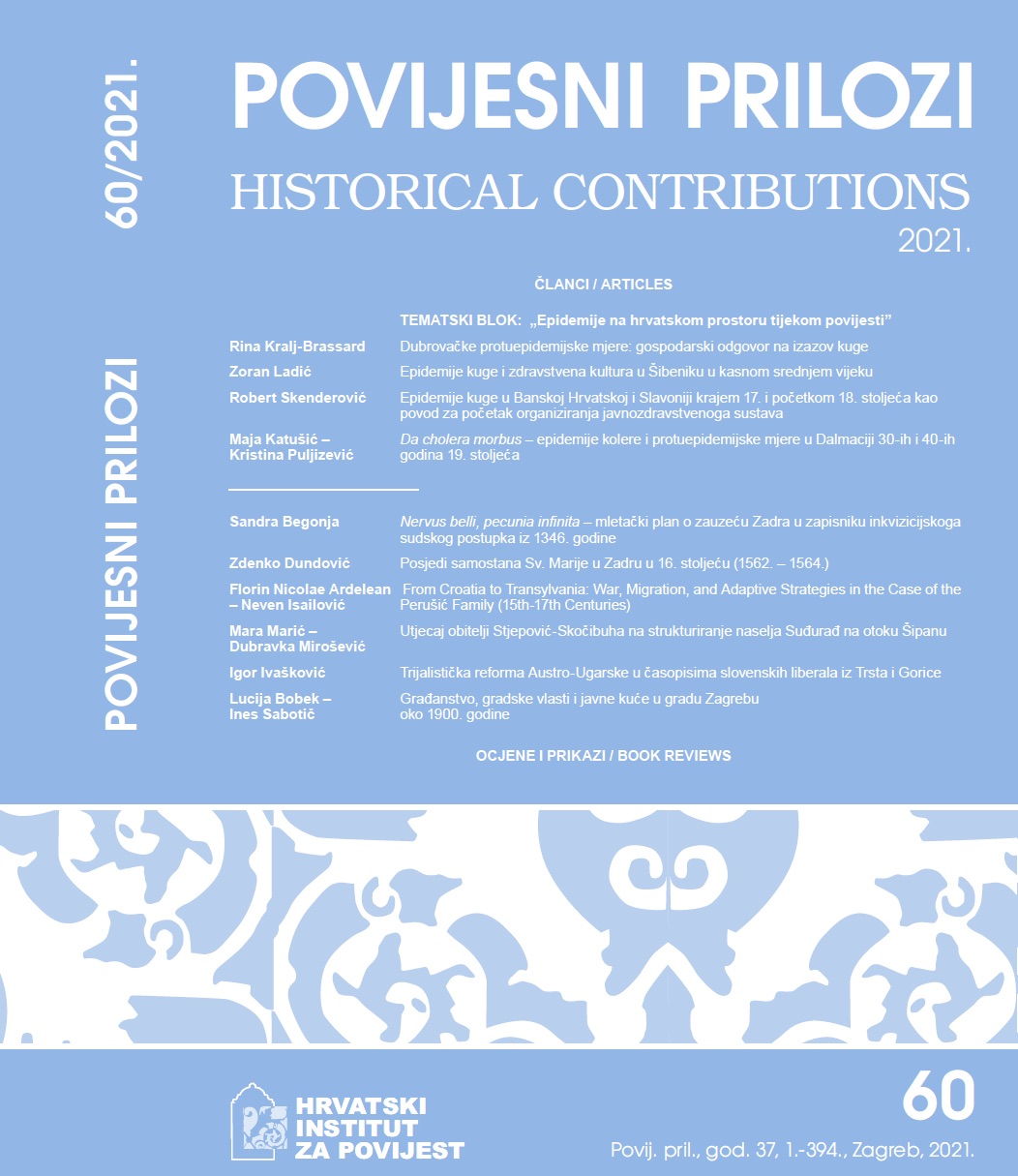Influence of Family Stjepović-Skočibuha on structuring of settlement Suđurađ on the island of Šipan
DOI:
https://doi.org/10.22586/pp.v40i60.11829Keywords:
island Šipan, settlement Suđurađ, family Stjepović-Skočibuha, country villa's and holdingsAbstract
In this paper, the subject of research is the Renaissance country buildings of the rich civil family Stjepović-Skočibuha, which were built during the 16th century by Tomo and his son Vice Stjepović-Skočibuha. Country buildings are located in the bay Suđurađ on the island of Šipan next to each other and are among the unique country units in the Dubrovnik area whose importance lies in content and size, and are also one of the most valuable monuments of Renaissance architectural heritage. The island of Šipan is part of the Elaphite archipelago and also the largest among this group of islands. On the southeast side, Suđurađ Bay, next to Šipanska Luka on the northwest side, is the second main settlement on the island. The aim of the research of these important country units was to determine the contribution of the Stjepović-Skočibuha family in the formation of the Suđurađ settlement, while the hypothesis itself is that the country units of this family significantly influenced the development of the Suđurađ settlement. An interdisciplinary methodological approach that is not exclusively related to historical disciplines has been applied. During the research, an extensive collection of literature on the historical and spatial features of the island of Šipan, the settlement of Suđurađ and the countryside itself was conducted, while systematic field observation analyzed the organizational and stylistic features of countryside with special emphasis on parks. In addition, a comparative analysis of these assemblies in relation to the country assemblies on Šipan was carried out, and the specifics of the units were singled out. On the basis of historical cartography, the Austrian cadastre from 1837, the historical spatial relations in the settlement of Suđurađ were analyzed; the position of the country-economic complexes of the Stjepović-Skočibuha family, ownership relations and the purpose of the land in the settlement. The results of such an extensive research, especially the transcription of the cadastre from 1837, established that the Stjepović-Skočibuha family is also in the first half. In the 19th century, it was the owner of a large part of the Suđurađ settlement and strongly influenced its formation.
Downloads
Published
How to Cite
Issue
Section
License
Copyright (c) 2020 Authors and journal

This work is licensed under a Creative Commons Attribution-NonCommercial 4.0 International License.







